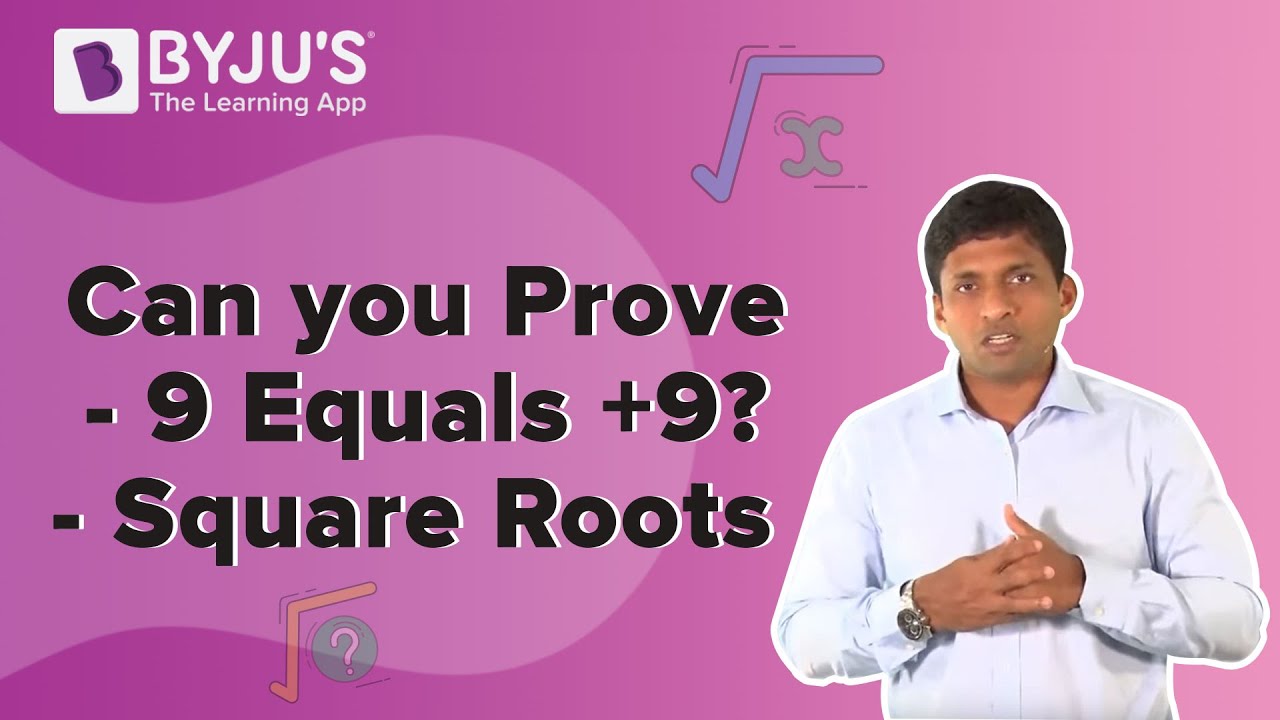Square and square root questions with solutions are given here for students to practice and memorise the square and square roots of different numbers. Often we have seen students face difficulty memorising the squares and square roots of numbers; one way to remember them could be by solving more and more questions so that they get well familiarised with the concepts of square and square roots.
Learn more about Squares and square roots.
Below is the list of the first 20 perfect squares and square roots:
|
Number |
Perfect Square |
Number |
Square Root |
|
1 |
1 |
1 |
1 |
|
2 |
4 |
2 |
1.4142 |
|
3 |
9 |
3 |
1.7321 |
|
4 |
16 |
4 |
2 |
|
5 |
25 |
5 |
2.2361 |
|
6 |
36 |
6 |
2.4495 |
|
7 |
49 |
7 |
2.6458 |
|
8 |
64 |
8 |
2.8284 |
|
9 |
81 |
9 |
3 |
|
10 |
100 |
10 |
3.1623 |
|
11 |
121 |
11 |
3.3166 |
|
12 |
144 |
12 |
3.4641 |
|
13 |
169 |
13 |
3.6056 |
|
14 |
196 |
14 |
3.7417 |
|
15 |
225 |
15 |
3.8730 |
|
16 |
256 |
16 |
4 |
|
17 |
289 |
17 |
4.1231 |
|
18 |
324 |
18 |
4.2426 |
|
19 |
361 |
19 |
4.3589 |
|
20 |
400 |
20 |
4.4721 |
Video Lesson on Square of a number

Square and Square Roots Questions with Solutions
Let us solve a few questions based on square and square roots.
Question 1:
Find the difference between the following without actual calculation:
(i) 352 – 342
(ii) 1342 – 1332
(iii) 622 – 612.
Solution:
The difference between the squares of two consecutive natural numbers is the sum of the natural numbers.
(i) 352 – 342 = 35 + 34 = 69
(ii) 1342 – 1332 = 134 + 133 = 267
(iii) 622 – 612 = 62 + 61 = 123
Question 2:
Express the following squares as a sum of two consecutive natural numbers:
(i) 172
(ii) 232
Solution:
The square of any odd natural number m can be expressed as a sum of two consecutive natural numbers: (m2 + 1)/2 and (m2 – 1)/2.
(i) 172 = 289 = [(289 + 1)/2 + (289 – 1)/2] = 145 + 144
(ii) 232.= 529 = [(529 – 1)/2 + (529 + 1)/2] = 264 + 265
Question 3:
Evaluate the following:
(i) 89 × 91
(ii) 16 × 18
Solution:
(i) 89 × 91 = (90 – 1)(90 + 1) = 902 – 1 = 8100 – 1
= 8099
(ii) 16 × 18 = (17 – 1)(17 + 1) = 172 – 1
= 289 – 1
= 288
Question 4:
Find the square root of the following by prime factorisation:
(i) 7744
(ii) 1156
(iii) 1.5625
Solution:
(i) √7744 = √(2 × 2 × 2 × 2 × 2 × 2 × 11 × 11) = 2 × 2 × 2 × 11 = 88
(ii) √1156 = √(2 × 2 × 17 × 17) = 2 × 17 = 34
(iii) √1.5625 = √(15625/10000) = √(5 × 5 × 5 × 5 × 5 × 5)/√(2 × 2 × 2 × 2 × 5 × 5 × 5 × 5)
= (5 × 5 × 5)/ (100) = 1.25
Also, watch these videos to get a clear understanding of square roots and how to visualise them.


Question 5:
Find the square root of 21,25,764 by the long division method.
Solution:
By the long division method:

∴ √2125764 = 1458
Also check: Trick to quickly find square root of any square number.
Question 6:
Find the value of x: √(x × 3042) + √(204.49) = 92.3.
Solution:
First, we shall calculate √(204.49) = √(20449/100) = √(11 × 11 × 13 × 13)/√(100) = 14.3
∴ √(x × 3042) + √(204.49) = 92.3
⇒ √(x × 3042) + 14.3 = 92.3
⇒ √(x × 3042) = 92.3 – 14.3
⇒ √(x × 3042) = 78
Squaring both sides, we get:
3042x = 6084
⇒ x = 2
Question 7:
Find the smallest number by which 10125 must be divided to get a perfect square number. Also, find the square root of the perfect square number.
Solution:
Prime factorisation of 10125 = 5 × 5 × 5 × 9 × 9
We see that one 5 is left unpaired. Thus, 10125 must be divided by 5 to get the perfect square number.
10125 ÷ 5 = 2025
Now, √2025 = √(5× 5 × 9 × 9) = 5 × 9 = 45
Also check:
Question 8:
In an auditorium, there are 21025 chairs. If the number of rows is equal to the number of columns, find out how many rows are there.
Solution:
Total number of chairs = 21025
Let x be the numbers of rows and columns of the chair, respectively.
Then, x × x = 21025
⇒ x2 = 21025
⇒ x = √21025 = 145
∴ there are 145 rows of chairs.
Question 9:
Find the smallest number that should be added to 1290 to make it a perfect square.
Solution:
Now ,1225 = 352 < 1290 < 362 = 1296
We see that, 1290 + 6 = 1296 = 362
Thus, 6 is the smallest number which must be added.
Question 10:
Find a Pythagorean triplet whose one number is 10.
Solution:
We know that for m being a natural number = (m2 – 1, 2m, m2 + 1) is a Pythagorean triplet.
Let 2m = 10
⇒ m = 5
Then, m2 – 1 = 24 and m2 + 1 = 26
Also, 262 = 242.+ 102
∴ (10, 24, 26) is the Pythagorean triplet.
Find more square root questions for practice.
Also Watch:

Related Articles |
|
Practice Questions on Squares and Square Roots
1. Identify which of the following is not a perfect square.
(i) 16000
(ii) 784
(iii) 1000
(iv) 13452
2. Find the Pythagorean triplet, whose one member is 6.
3. Find the square root of the following using the prime factorisation method.
(i) 20164
(ii) 1764
(iii) 3844
4. Find the square of the following using the long division method.
(i) 2030625
(ii) 20736
(iii) 34404
Keep visiting BYJU’S to get more such Maths lessons in a simple, concise and easy-to-understand way. Also, register at BYJU’S – The Learning App to get complete assistance for Maths preparation with video lessons, notes, tips and other study materials.